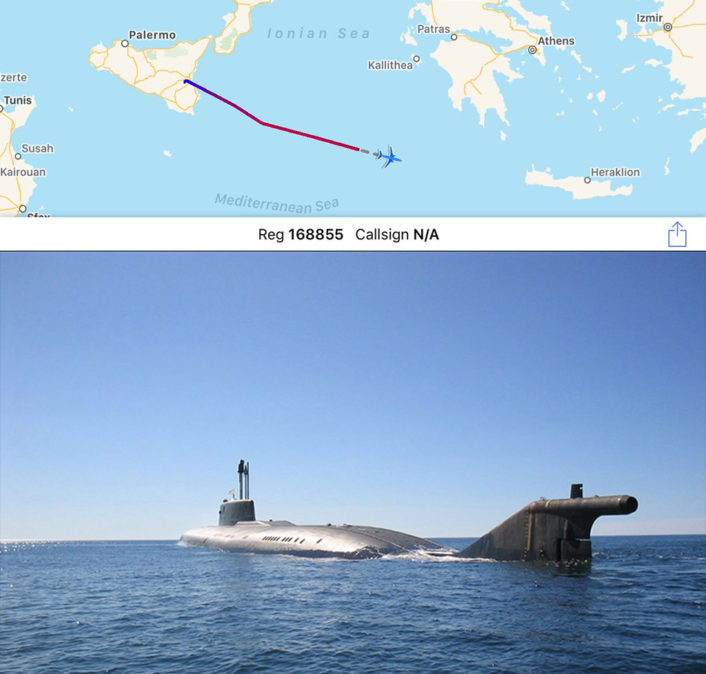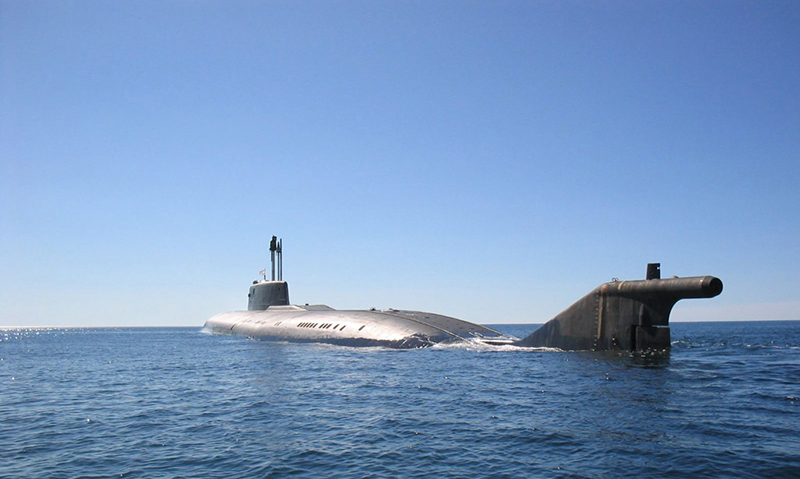Several Maritime Patrol Aircraft are involved in a big hunt: one (possibly two) Oscar II-class submarine that Russia has sent after NATO warships.
According to military sources close to The Aviationist, a big hunt is underway in the eastern Med: several MPA aircraft, including U.S. Navy P-8 Poseidon jets operating from NAS Sigonella, Sicily, are looking for one, possibly two, Russian Navy submarines operating in the vicinity of a group of warships of the NATO Maritime Group.
What makes the news even more interesting is the fact that the Russian Navy submarine would be an Oscar II Class, that is to say a “carrier killer” sub, designed with the primary mission of countering aircraft carrier battlegroups. Among the NATO vessels in proximity of the Oscar II there is also the French Charles De Gaulle nuclear-powered aircraft carrier and the USS Eisenhower is not too far away either.
Therefore a massive Cold War-style hide-and-seek in underway, keeping both sides quite busy.
Although heavily defended, large flattops are vulnerable to submarines and can’t be considered immune from receiving battle damage or being limited in their fighting ability by a modern sub operating nearby: nuclear or diesel-powered subs have proved to be able to slip in the middle of the multi-billion-dollar aircraft carrier’s defensive screen, while avoiding detection by ASW (Anti-Submarine Warfare) aircraft, and pretend-sinking U.S. (or allied) carriers and most of their escort vessels.
Those were scripted drills, with the flattops put in the most challenging conditions for training purposes; still, the simulated sinkings once again prove that aircraft carriers’ underwater defenses, albeit excellent, are not impenetrable and subs still pose a significant threat to powerful Carrier Strike Groups.
Especially when the attacker is a quite advanced Oscar II class nuclear-powered guided-missile submarine (SSGN) using long-range SS-N-19 “Shipwreck” ASCMs (anti-ship cruise missiles).
Based on the latest reports, 8 Oscar IIs are in active service built in the 1980s and early 1990s, eight remain in service. Even though deemed to be inferior to those of the Akula II, the acoustic performance of the Oscar II class is believed to be superior to early Akula-class submarine.
In 2016 Russia has started a multiyear plan to modernise all its Project 949A Oscar II-class subs that includes replacing the 24 SS-N-19 missiles with up to 72 newer 3M55 Oniks (SS-N-26 ‘Strobile’) or 3M54 Klub (SS-N-27 ‘Sizzler’) anti ship missiles.

Related articles
















